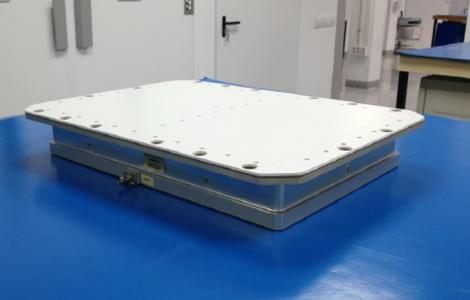Miniaturised conformal antenna for nano-landers

To develop a miniaturised antenna for Entry, Descent and Landing phases of planetary mission probes
After Beagle 2 failure, one of the recommendations from the Commission of Inquiry concluded that future planetary entry missions should include a minimum telemetry of critical performance measurements and spacecraft health status during mission critical phases such as entry and descent. In case a relay satellite would be available, the data would be transferred to it, which will act as an Orbiter. Alternatively, a Direct-to-Earth (DTE) link would be required.The Entry Descent and Landing (EDL) is a very specific scenario for communications limited by several constraints: plasma formation, aerodynamic disturbances due to protrusion from probe external mechanical profile, antenna exposure to high temperature, probe attitude, Earth angle coverage, etc. and the antenna has to be able to cope with any possible angular movement of the landing probe.The communication link using conventional omnidirectional antennas is often marginally capable of the required bit rate in the baseline scenarios. Furthermore, the pattern could be strongly affected by the body of the probe and possible shadowing can occur in case only one element is used. Wrap-around conformal antennas are considered a very good alternative in order to fulfil the aerodynamic and RF requirements. They will be integrated on the surface of the backshell and on the surface of the Lander after the backshell is released. This type of antenna will also allow to be highly performing independently of the attitude of the descent landing probe.UHF wraparound conformal antennas have been successfully used on the Phoenix lander during EDL and proposed for Mars Sample Laboratory (MSL). Typically UHF frequency has been considered for the communication with the orbiter, but possible upcoming missions might consider S-band.This activity will start with a critical look at the requirements of the past and upcoming planetary missions and will carefully consider the attitude of the Descent module and lander and its impact on the view angle of the antenna. A trade-off analysis on the optimum communication frequency and antenna performance shall be performed. A preliminary design of a conformal antenna considering a realistic representation of the entry probe and lander shall be performed. The critical components will be identified and critical breadboarding activities carried out. Using these results, a detailed design will be performed, followed by the manufacturing of the full conformal antenna. A full test campaign on a mock-up will be performed and conclusions drawn. A development plan will be established to bring the technology to flight readiness.This activity encompasses the following tasks:- System Requirements- Preliminary design- Critical breadboarding activities- Detailed design- Manufacturing and testing- Conclusions and development plan
